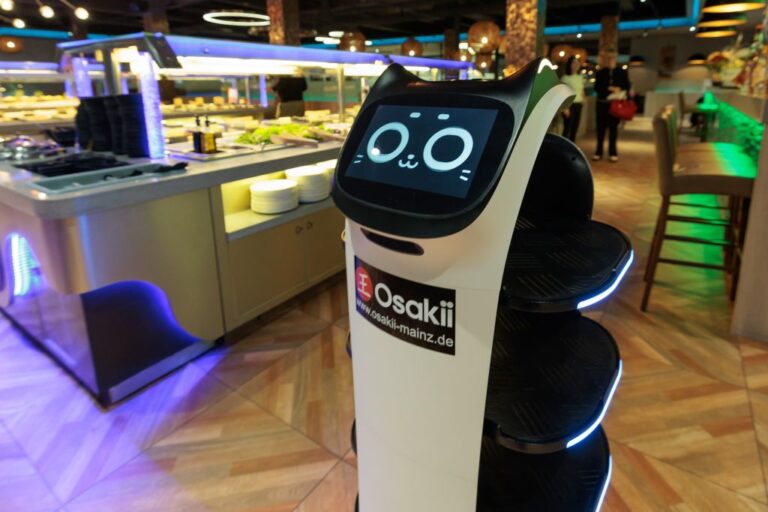Unlocking Embedded Insurance 2.0: The Future of Seamless Coverage Solutions
In today’s fast-paced world, the concept of embedded insurance is revolutionizing how consumers access protection, seamlessly integrating coverage into everyday purchases. As we transition into what experts are calling Embedded Insurance 2.0, this innovative model offers a frictionless experience that is both convenient and efficient, allowing insurers to reach customers precisely where they are.
The Evolution of Embedded Insurance
Embedded insurance is transforming the insurance landscape by merging policies with digital platforms such as creator economies, vertical SaaS, and peer-to-peer services. This evolution aims to democratize access, simplify claims processes, and rebuild trust in an industry often criticized for its complexity.
Insights from Industry Experts
To explore this paradigm shift, FinTech Global’s Harry Slade spoke with Adam Feiler, SVP of Global Sales at Air Doctor, and Efrat Marmur, VP of Marketing. Their discussion sheds light on how embedded insurance can enhance customer experiences, the partnerships fueling its growth, and the challenges that accompany this technological advancement.
Sectors Poised for Disruption
The potential of embedded insurance thrives in sectors where digital ecosystems and consumer needs intersect. The global embedded insurance market is projected to grow from $136.79 billion in 2024 to $210.90 billion by 2025—a compound annual growth rate (CAGR) of 35.14%, according to Mordor Intelligence’s 2024 report.
- Mobility
- Healthcare
- Digital Work
- Creator Platforms
- Online Travel Agencies
Feiler notes, “We’re witnessing significant growth opportunities in sectors where mobility and healthcare converge, as seen with creator platforms and wellness apps.” This trend underscores a critical point: consumers often overlook their need for coverage until it becomes essential.
Building Trust Through Automation
The foundation of Embedded Insurance 2.0 is automation, yet it must not compromise trust. Marmur emphasizes the necessity of maintaining a human touch within digital frameworks. She states, “Automation is effective only if users feel acknowledged and supported.”
For instance, if a traveler experiences a medical emergency abroad, platforms like Air Doctor can connect them with local healthcare providers rapidly while automating policy validation behind the scenes. This seamless experience reassures users rather than adding risk.
The Role of Partnerships
The expansion of embedded insurance hinges on partnerships that unite platforms, insurers, and service providers, creating cohesive ecosystems. Feiler envisions a future of multilateral collaboration in which partnerships enhance the customer journey.
“For example, a travel insurer could collaborate with a platform to embed health access from the outset, empowering users with immediate support,” Feiler explains. These alliances are not merely about distribution; they build long-term value through enhanced services.
Maintaining Convenience with Transparency
While the strength of embedded insurance lies in its invisibility, this can also serve as a liability. Marmur points out, “If coverage is too seamless, customers might overlook what they’ve agreed to.”
To combat this, insurers must prioritize transparency, ensuring customers are fully aware of the terms they are signing. Design strategies, such as contextual prompts and clear policy summaries, can significantly enhance understanding.
The Technological Infrastructure
Scaling Embedded Insurance 2.0 globally requires robust technology infrastructures. The vertical SaaS market is expected to surge from $315.68 billion in 2025 to $1,131.52 billion by 2032, highlighting the critical role of APIs in enabling seamless integrations.
Feiler emphasizes that “APIs are the backbone of Embedded Insurance 2.0,” allowing for real-time eligibility checks and automating claims through smart contracts. This technology ensures that embedded insurance is not only convenient but also globally applicable.
Looking Ahead
The future of Embedded Insurance 2.0 is about reimagining how protection integrates into daily life. By embedding coverage into various platforms, insurers can connect with new audiences while fostering trust through effective automation and partnerships. Success in this arena will depend on balancing convenience with clarity and innovation with ethical practices.
As we look ahead, the objective is clear: to make insurance not just accessible but also seamlessly integrated into consumers’ lives, ready to provide support when needed most.
For more insights into the evolving insurance landscape, check out Insurance Innovations or explore Embedded Insurance Solutions.







